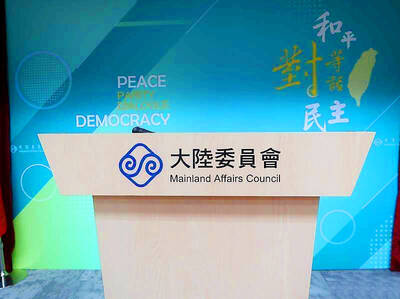General Motors Co (GM) yesterday announced a loss of US$1.2 billion since emerging from bankruptcy in July, but said it would step up repayments to the US and Canadian governments of bailout aid.
The loss, through Sept. 30, is far better than previous quarters and a sign that the auto giant is starting to turn around.
GM chief financial officer Ray Young, however, cautioned that the second and third-quarter figures don’t comply with US accounting standards and shouldn’t be compared with previous earnings.
GM says it is re-valuing its assets and liabilities and should comply with accounting standards next year.
The third quarter loss announcement beat analysts’ expectations. GM said the losses came as revenues totaled US$28 billion in the quarter, US$5 billion more than in the preceding three-month period.
The company said it would begin repaying its government loans next month “in light of improving global economic conditions, stabilizing industry sales and its healthier cash position.”
It owes US$6.7 billion to the US Treasury and US$1.4 billion to Canada for aid to help it emerge as a new entity from bankruptcy.
“GM plans to repay the United States, Canadian and Ontario government loans in quarterly installments from escrowed funds, beginning next month with an initial 1.2 billion dollar payment to be made in December followed by quarterly payments,” the company said in a statement releasing preliminary financial results.
GM said it has begun repaying German state aid for its Opel division and will pay off the remaining debt by the end of the month.
“The company has begun to repay the German government loans which were extended to support Opel, and had a balance of 900 million euros [US$1.34 billion]as of September 30, 2009,” the GM statement said.
“Opel has already repaid 500 million euros of that in November, and will repay the remaining 400 million euro balance by the end of the month,” GM said.
The company would be on track to pay off the US$6.7 billion US debt and a US$1.4 billion debt to Canada by the middle of 2011, well ahead of a mid-2015 deadline to repay the two governments.
The government debt represents about 13 percent of the US$52 billion that US taxpayers have invested in GM, the majority of which was exchanged for a 61 percent ownership stake in the company.
Even if GM pays back all its loans early, government investigators have questioned whether taxpayers will recoup their full investment in GM and fellow bailed-out automaker Chrysler Group LLC.
GM, which exited bankruptcy as a new privately held company on July 10, has said it hopes to sell stock to the public late next year so taxpayers can recoup at least part of their remaining investment.
However, a US Government Accountability Office report issued earlier this month said that the automakers’ share values would have to soar to levels they didn’t even approach when they were healthier for the US$80 billion in taxpayer loans to be completely repaid.
The automaker will draw on about US$13 billion that remains deposited in escrow by the government to help make the payments.
GM chairman Ed Whitacre said last week that GM was committed to repaying its government loans.
“Can GM pay back its loans? You bet,” Whitacre said during an address at Texas Lutheran University. “I can’t tell you when, but it won’t be very long.”
He also said the timing of any GM IPO depends on when the firm returns to profitability.
CHINESE PROBE
Meanwhile, a Chinese anti-dumping and subsidy probe into US carmakers that followed a US levy on China-made tires involves US$1.97 billion worth of goods, Chinese Commerce Ministry spokesman Yao Jian (姚堅) said yesterday.
China can impose “provisional measures” against automakers including GM and Ford Motor Co after 60 days from the time the investigation began on Nov. 6, with a final ruling in 12 months, Yao said, without providing specifics.
The announcement shows the scope of the probe that was first revealed on Oct. 29 by Chinese Commerce Minister Chen Deming (陳德銘) during a meeting with US officials. The Obama administration on Sept. 11 levied a 35 percent duty on US$1.8 billion of China-made tires.
China and the US, with US$409 billion of trade between them, have swapped complaints about steel, poultry and tires as calls to protect jobs intensified during the worst economic crisis since the Great Depression.
Also See: Russia suggests THAT Renault take control of Avtovaz

MORE VISITORS: The Tourism Administration said that it is seeing positive prospects in its efforts to expand the tourism market in North America and Europe Taiwan has been ranked as the cheapest place in the world to travel to this year, based on a list recommended by NerdWallet. The San Francisco-based personal finance company said that Taiwan topped the list of 16 nations it chose for budget travelers because US tourists do not need visas and travelers can easily have a good meal for less than US$10. A bus ride in Taipei costs just under US$0.50, while subway rides start at US$0.60, the firm said, adding that public transportation in Taiwan is easy to navigate. The firm also called Taiwan a “food lover’s paradise,” citing inexpensive breakfast stalls

TRADE: A mandatory declaration of origin for manufactured goods bound for the US is to take effect on May 7 to block China from exploiting Taiwan’s trade channels All products manufactured in Taiwan and exported to the US must include a signed declaration of origin starting on May 7, the Bureau of Foreign Trade announced yesterday. US President Donald Trump on April 2 imposed a 32 percent tariff on imports from Taiwan, but one week later announced a 90-day pause on its implementation. However, a universal 10 percent tariff was immediately applied to most imports from around the world. On April 12, the Trump administration further exempted computers, smartphones and semiconductors from the new tariffs. In response, President William Lai’s (賴清德) administration has introduced a series of countermeasures to support affected

CROSS-STRAIT: The vast majority of Taiwanese support maintaining the ‘status quo,’ while concern is rising about Beijing’s influence operations More than eight out of 10 Taiwanese reject Beijing’s “one country, two systems” framework for cross-strait relations, according to a survey released by the Mainland Affairs Council (MAC) on Thursday. The MAC’s latest quarterly survey found that 84.4 percent of respondents opposed Beijing’s “one country, two systems” formula for handling cross-strait relations — a figure consistent with past polling. Over the past three years, opposition to the framework has remained high, ranging from a low of 83.6 percent in April 2023 to a peak of 89.6 percent in April last year. In the most recent poll, 82.5 percent also rejected China’s

PLUGGING HOLES: The amendments would bring the legislation in line with systems found in other countries such as Japan and the US, Legislator Chen Kuan-ting said Democratic Progressive Party (DPP) Legislator Chen Kuan-ting (陳冠廷) has proposed amending national security legislation amid a spate of espionage cases. Potential gaps in security vetting procedures for personnel with access to sensitive information prompted him to propose the amendments, which would introduce changes to Article 14 of the Classified National Security Information Protection Act (國家機密保護法), Chen said yesterday. The proposal, which aims to enhance interagency vetting procedures and reduce the risk of classified information leaks, would establish a comprehensive security clearance system in Taiwan, he said. The amendment would require character and loyalty checks for civil servants and intelligence personnel prior to